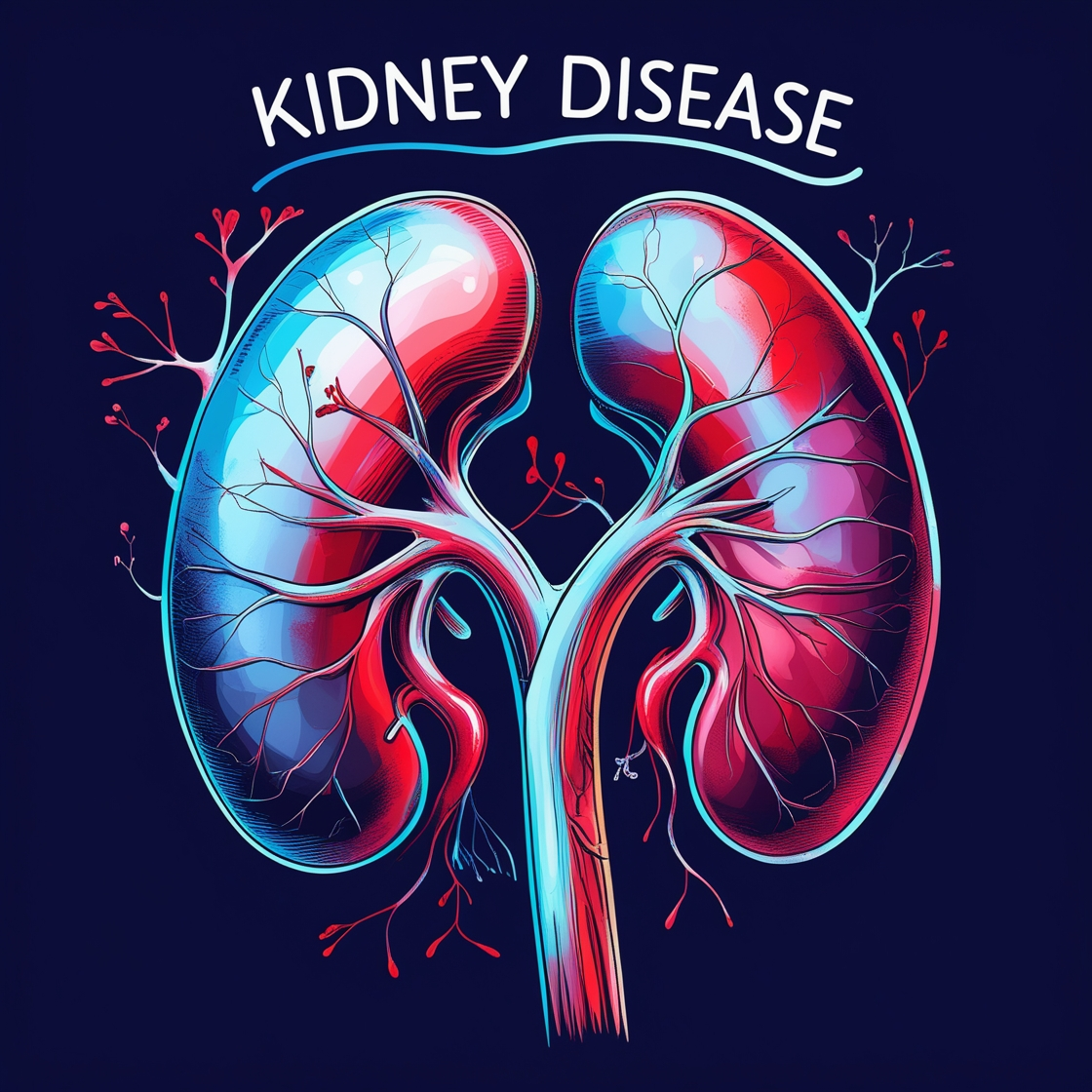Kidney Disease: Symptoms & Treatment
Your hard-working kidneys
Kidney Disease: Symptoms & Treatment. Your kidneys, each just the size of a computer mouse, filter all the blood in your body every 30 minutes. They work hard to remove wastes, toxins, and excess fluid. They also:
- Help control blood pressure.
- Signal the body to make red blood cells.
- Help keep your bones healthy.
- Regulate blood chemicals that are essential to life.
Kidneys that function properly are critical for maintaining good health.

CKD
CKD is a condition in which the kidneys are damaged and can’t filter blood as well as they should. Because of this, excess fluid and waste remain in the body and may cause health problems such as heart disease.
Nephrologist: Key Differences / When to See One. A nephrologist is a medical doctor who specializes in diagnosing and treating kidney conditions. You should see a nephrologist if you have any signs of kidney disease or other conditions that may damage your kidneys. During your appointments, your nephrologist will examine your medical history, order tests and treat your condition.
Other health problems related to CKD include:
- Anemia or low number of red blood cells.
- Increased occurrence of infections.
- Low calcium levels, high potassium levels, and high phosphorus levels in the blood.
- Loss of appetite or eating less.
- Depression or lower quality of life.
CKD has varying levels of seriousness. It usually gets worse over time, though treatment has been shown to slow progression. CKD can progress to kidney failure and early cardiovascular disease.
When the kidneys stop working, dialysis or kidney transplant is needed for survival. Kidney failure treated with dialysis or kidney transplant is called end-stage kidney disease. Not all people with kidney disease progress to kidney failure.
Stages
Doctors use glomerular filtration rate (GFR) to determine how advanced a person’s CKD is. The GFR shows how well a person’s kidney is filtering waste. A person’s GFR can depend on their body size, sex, and age.
A doctor can determine a person’s GFR by testing the levels of creatinine in their blood. Creatinine is a waste product of creatine, which is an acid that helps supply energy to muscle cells.
When the kidneys are working correctly, they filter a relatively constant amount of creatinine from the blood. Changes in blood creatinine levels can indicate that a person has a problem with their kidneys.
A change in a person’s GFR allows a doctor to classify CKD into stages, as follows.
Stage 1
Stage 1 CKD means that a person’s GFR is at least 90 milliliters per minute (ml/min) per 1.73 meters squared (m2). This is normal kidney function but with evidence of kidney damage. Some signs of kidney damage in stage 1 CKD can include protein in a person’s urine or physical damage.
Stage 2
If a person has stage 2 CKD, their GFR is 60–89 ml/min per 1.73 m2. A GFR in this range usually means that a person’s kidneys are working well. However, this GFR indicates that a person with stage 2 CKD has additional signs of kidney damage. These signs can include physical damage to the kidney or protein in a person’s urine.
A person with stage 1 or 2 CKD can speak with a doctor about medications that can help protect their kidneys.
Stage 3
At stage 3 CKD, a person’s GFR is 30–59 ml/min per 1.73 m2. This range indicates that a person has some damage to the kidneys. A person’s kidneys are not working as well as they should at stage 3 CKD.
Stage 3 CKD can be separated into two subcategories:
- Stage 3a: Stage 3a means that a person has a GFR of 45–59 ml/min per 1.73 m2.
- Stage 3b: Stage 3b means that a person has a GFR of 30–44 ml/min per 1.73 m2.
Although most people with stage 3 CKD do not have symptoms, some may experience:
- swelling in the hands and feet
- lower back pain
- more frequent urination
- anemia
- high blood pressure
- bone disease
A person with stage 1–3 CKD may be able to slow the damage to their kidneys by:
- controlling their blood sugar, if they have diabetes
- controlling their blood pressure
- eating a healthy diet
- not smoking or using tobacco
- being active for 30 minutes per day, 5 days per week
- maintaining a moderate weight
- meeting with a kidney doctor, or nephrologist
A person with stage 3 CKD may also want to speak with a dietitian about following a healthy diet. Additionally, a person with stage 3 CKD can speak with a doctor about angiotensin converting enzyme (ACE) inhibitors or angiotensin II receptor blockers (ARBs). These medications can lower blood pressure and may help prevent CKD from worsening.
Stage 4
By stage 4 CKD, a person’s GFR is 15–29 ml/min per 1.73 m2. At this stage, a person’s kidneys are moderately to severely damaged. Stage 4 CKD is a serious condition and the last stage before a person develops kidney failure.
A person with stage 4 CKD is more likely to experience symptoms such as swollen hands and feet, back pain, and more frequent urination. Complications such as anemia or bone disease are also more likely.
A doctor may recommend that a person with stage 4 CKD speak with a nephrologist or dietitian.
Stage 5
A person with stage 5 CKD has a GFR of 15 ml/min per 1.73 m2 or less. At this stage, a person’s kidneys have either failed or are close to failing.
Symptoms of kidney failure include:
- itching
- muscle cramps
- nausea
- vomiting
- swelling in the hands and feet
- back pain
- more frequent urination
- difficulty sleeping
- difficulty breathing
- decreased urine output
If a person has kidney failure, they will need to undergo dialysis or have a kidney transplant to survive. Kidney dialysis helps filter a person’s blood when their kidneys are no longer able to.
It is essential that people receive an early diagnosis of and prompt treatment for kidney disease to prevent serious damage.
People with diabetes should have an annual test, which measures microalbuminuria — or small amounts of protein — in urine. This test can detect early diabetic nephropathy, which is kidney damage linked to diabetes.
Symptoms
People with CKD may not feel ill or notice any symptoms. The only way to find out for sure if you have CKD is through blood and urine tests. These tests measure both the creatinine level in the blood and protein in the urine.
What is kidney disease?
Your kidneys are two bean-shaped organs that act as your body’s waste filtration system. They filter your blood 12 times per hour. Excess water and unwanted chemicals or waste in the blood are disposed of as urine (wee).
Kidney disease is when your kidneys are damaged in some way and are not filtering your blood effectively.
Symptoms of kidney disease
Kidney disease is called a ‘silent disease’ as there are often few or no symptoms. In fact, you can lose up to 90 per cent of your kidneys’ functionality before experiencing any symptoms. Some signs and symptoms include:
- a change in the frequency and quantity of urine you pass, especially at night (usually an increase at first)
- blood in your urine (haematuria)
- changes in the appearance of your urine or persistently frothy urine
- puffiness around your legs and ankles (oedema)
- pain in your back (under the lower ribs, where the kidneys are located)
- pain or burning when you pass urine
- high blood pressure.
If your kidneys begin to fail, waste products and extra fluid build up in your blood. This, and other problems, gradually leads to:
- tiredness and inability to concentrate
- generally feeling unwell
- loss of appetite
- nausea and vomiting
- shortness of breath
- itching
- bad breath and a metallic taste in the mouth.
Treatment for kidney disease
If detected early enough, the progress of kidney disease can be slowed and sometimes even prevented. In the early stages, changes to diet and medication can help to increase the life of your kidneys.
If kidney function is reduced to less than 10 per cent of normal, the loss of function must be replaced by dialysis or a kidney transplant. Dialysis is a treatment for kidney failure that removes waste products and extra water from the blood by filtering it through a special membrane (fine filter).
Stopping Kidney Disease Food Guide: A recipe, nutrition and meal planning guide to treat the factors driving the progression of incurable kidney disease Paperback – March 25, 2022.
Kidneyhood.org dietary and nutritional approach to kidney disease management has been clinically proven to improve eGFR/GFR, creatinine and blood urea nitrogen levels.

Risk factors for kidney disease
You are more at risk of developing chronic kidney disease if you:
- have high blood pressure
- have diabetes
- have established heart problems (heart failure or past heart attack) or have had a stroke
- are obese (a body mass index of greater than 30)
- are over 60 years of age
- have a family history of kidney failure
- smoke
- have a history of acute kidney injury
- are of Aboriginal or Torres Strait Islander origin and 18 years and older.

High blood pressure and kidney disease
High blood pressure (hypertension) is increased pressure inside the arteries that carry blood from your heart to all parts of your body. Untreated, high blood pressure can damage your kidneys.
Also, high blood pressure can develop as a result of kidney disease or renal artery stenosis (narrowing of the main artery to one or both kidneys). Your kidneys control the amount of fluid in your blood vessels and produce a hormone called renin that helps to control blood pressure.
Early stages of CKD
Kidney disease does not tend to cause symptoms when it’s at an early stage.
This is because the body is usually able to cope with a significant reduction in kidney function.
Kidney disease is often only diagnosed at this stage if a routine test for another condition, such as a blood or urine test, detects a possible problem.
If it’s found at an early stage, medicine and regular tests to monitor it may help stop it becoming more advanced.
Later stages of CKD
A number of symptoms can develop if kidney disease is not found early or it gets worse despite treatment.
Symptoms can include:
- weight loss and poor appetite
- swollen ankles, feet or hands – as a result of water retention (oedema)
- shortness of breath
- tiredness
- blood in your pee (urine)
- an increased need to pee – particularly at night
- difficulty sleeping (insomnia)
- itchy skin
- muscle cramps
- feeling sick
- headaches
- erectile dysfunction in men
This stage of CKD is known as kidney failure, end-stage renal disease or established renal failure. It may eventually require treatment with dialysis or a kidney transplant.
When to get medical advice
See a GP if you have persistent or worrying symptoms that you think could be caused by kidney disease.
The symptoms of kidney disease can be caused by many less serious conditions, so it’s important to get a proper diagnosis.
If you do have CKD, it’s best to get it diagnosed as soon as possible. Kidney disease can be diagnosed by having blood and urine tests.




